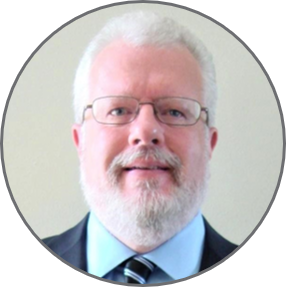1 min read
Radiologist Salary Reckoning: Who Has Control Over Your Compensation?
One of the first questions any radiologist has when exploring a new opportunity is about salary. It's an important question. At vRad, some...

Remote radiologist jobs with flexible schedules, equitable pay, and the most advanced reading platform. Discover teleradiology at vRad.

Radiologist well-being matters. Explore how vRad takes action to prevent burnout with expert-led, confidential support through our partnership with VITAL WorkLife. Helping radiologists thrive.

Visit the vRad Blog for radiologist experiences at vRad, career resources, and more.

vRad provides radiology residents and fellows free radiology education resources for ABR boards, noon lectures, and CME.

Teleradiology services leader since 2001. See how vRad AI is helping deliver faster, higher-quality care for 50,000+ critical patients each year.

Subspecialist care for the women in your community. 48-hour screenings. 1-hour diagnostics. Comprehensive compliance and inspection support.

vRad’s stroke protocol auto-assigns stroke cases to the top of all available radiologists’ worklists, with requirements to be read next.

vRad’s unique teleradiology workflow for trauma studies delivers consistently fast turnaround times—even during periods of high volume.

vRad’s Operations Center is the central hub that ensures imaging studies and communications are handled efficiently and swiftly.

vRad is delivering faster radiology turnaround times for 40,000+ critical patients annually, using four unique strategies, including AI.
.jpg?width=1024&height=576&name=vRad-High-Quality-Patient-Care-1024x576%20(1).jpg)
vRad is developing and using AI to improve radiology quality assurance and reduce medical malpractice risk.

Now you can power your practice with the same fully integrated technology and support ecosystem we use. The vRad Platform.

Since developing and launching our first model in 2015, vRad has been at the forefront of AI in radiology.

Since 2010, vRad Radiology Education has provided high-quality radiology CME. Open to all radiologists, these 15-minute online modules are a convenient way to stay up to date on practical radiology topics.

Join vRad’s annual spring CME conference featuring top speakers and practical radiology topics.

vRad provides radiology residents and fellows free radiology education resources for ABR boards, noon lectures, and CME.

Academically oriented radiologists love practicing at vRad too. Check out the research published by vRad radiologists and team members.

Learn how vRad revolutionized radiology and has been at the forefront of innovation since 2001.

%20(2).jpg?width=1008&height=755&name=Copy%20of%20Mega%20Nav%20Images%202025%20(1008%20x%20755%20px)%20(2).jpg)

Visit the vRad blog for radiologist experiences at vRad, career resources, and more.


Explore our practice’s reading platform, breast imaging program, AI, and more. Plus, hear from vRad radiologists about what it’s like to practice at vRad.

Ready to be part of something meaningful? Explore team member careers at vRad.
3 min read
 Adam S. Jones
:
February 9, 2021
Adam S. Jones
:
February 9, 2021

If your Curriculum Vitae isn’t all it could be, you may as well be stacking trophies in a cave. I say this as a longtime radiologist recruiter who firmly believes a CV is something of an unavoidable add-on. Much more important is who you are as a physician and a person.
Over the past 25-plus years I have seen thousands of CVs and it has convinced me that regularly updating your CV is the single most important thing you can do to maintain a career contingency plan. And you’ve got to have one of those, Covid-19 or no Covid-19.
To identify some simple CV-buffing measures on which radiologists should check at least twice a year, I consulted with Raymond Montecalvo, MD, Senior Medical Director here at vRad. Here are eight pointers that he and I strongly agree are critical. (We came up with more than eight, but you only have so much time.)
Making a habit of tweaking your CV “helps you bounce your own career off of yourself so you can see yourself as others would see you,” Dr. Montecalvo points out. Yes, it’s a seller’s market for skilled radiologists right now. But then no one saw Covid coming. Change can strike like lightening. “Just this January I interviewed a radiologist who’s 63 years old," says Dr. Montecalvo, who regularly revisits his CV even with retirement inching closer. “You just never know.”
You’d be surprised how many CVs we get that don’t have any contact info at all. That alone makes for a poor first impression. Email address and phone number will do.
Ask yourself if you’re aiming for a private group or an academic practice, for example. Then consider each of your CV's components. Do they support your intent and what a hiring manger is likely to look for? For instance, a teaching hospital or health system may be interested in seeing all your pertinent publications. Others, probably not so much.
Use your CV to give a sense of how you’ve been developing from your undergraduate days to medical school to your current life as a radiologist. As Dr. Montecalvo puts it: “I want to see how you got to where you are from where you started.” We also want to get a feel for what’s motivated you along the way.
Don’t assume everyone who’s hiring is focused on productivity above all else. It’s often more important that you’d fit in with the culture. Are you now in a small rural hospital that doesn’t see much volume? A big private practice covering multiple hospitals and seeing massive volumes? That’s important for us to know with a glance at your CV.
How thoughtfully your CV is arranged, organized and presented is really an expression of your interest in the job as well as your passion for your work. Every physician appreciates a colleague who’s thrilled to contribute to patient care while supporting workplace culture. In a CV, form can subtly convey as much as function.
You really do have to explain every single gap in your CV’s timeline. But you don’t have to go into detail. Took a vacation between earning your undergraduate degree and starting medical school? Understandable—and only a problem if you try to hide it.
To hit that last point, you don’t need to avoid listing group-oriented activities outside of work. Church missions, Army Reserve service—whatever you’ve got, Dr. Montecalvo says. “I just want to know you’re a team player,” he explains. “I want to see that you know how to work in a collaborative way.”
Another thing on which Dr. Montecalvo and I agree: It’s hugely rewarding to help a radiologist relaunch his or her career with new goals to reach for and new horizons to head toward.
“Patient care is always Job 1,” Dr. Montecalvo says. “But I can only read so many cases. I can help a lot more patients indirectly, by helping skilled radiologists find a place they truly love to do their work.”
If either of us can help you in any way with your CV—or your career—please don’t hesitate to reach out.

1 min read
One of the first questions any radiologist has when exploring a new opportunity is about salary. It's an important question. At vRad, some...
.png)
With the amount of volatility and uncertainty in the U.S. economy, it’s no surprise that even radiologists, who are used to being in high demand, are...
.png)
The 2021 radiologist job market finds radiologists at the mercy of those who would hire them. The imbalance has a lot to do with a certain public...
vRad (Virtual Radiologic) is a national radiology practice combining clinical excellence with cutting-edge technology development. Each year, we bring exceptional radiology care to millions of patients and empower healthcare providers with technology-driven solutions.
Non-Clinical Inquiries (Total Free):
800.737.0610
Outside U.S.:
011.1.952.595.1111
3600 Minnesota Drive, Suite 800
Edina, MN 55435